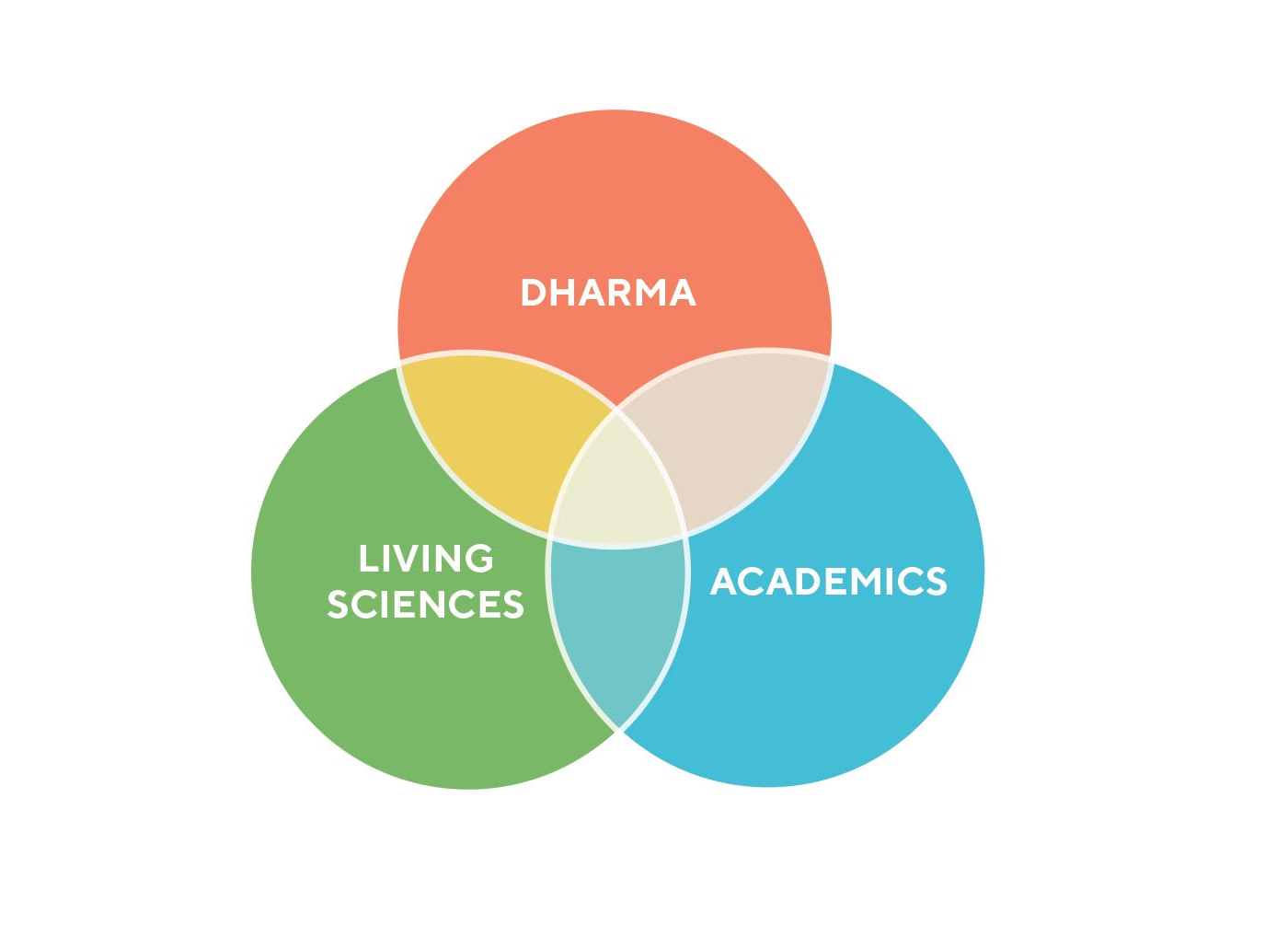The Three Spheres of a Middle Way Education

About This Resource
Details
Middle Way Education’s Three Areas of Focus
In order to function in a variety of cultural, geographical, and educational environments, the Middle Way Curriculum is designed to be modified. It can be adapted to meet the specific needs of a community based on three primary Spheres of Learning or areas of focus: one elective; one academic; and the dharma.
Our pilot school, The Middle Way School of the Hudson Valley, is located in a rural community in New York State. Our diverse constituent base has widely different viewpoints and cultural references, but finds commonality in their love of nature. The school adapts to this environment by providing a strong emphasis on practical living skills and outdoor education. Therefore, our three spheres are: 1) Living Sciences; 2) Academics; and 3) Dharma.
Each sphere is clearly articulated and expressed so that teachers know what they are doing and when to do it and have all the tools and resources they need. Therefore each sphere has a designated curriculum coordinator to help scope and sequence the curriculum. These three spheres rarely exist in isolation. They are meant to overlap, sometimes two at a time, sometimes all three.
EXAMPLE – BOUNDARY WALK: In the first thematic unit of the year, Taking Your Seat, students walk the boundary of the campus. Younger students might count their steps and name what they see, expanding their vocabulary. Older students develop their mapping skills and make charts. They may sing as they explore, or draw pictures and signage when they return to class, or write a story about it. Every age group will conscientiously clear the path making it safe as they go. They use their senses to be aware of and appreciative of the space within the boundary and to understand the concept of boundaries. And once the boundary is established students and staff join in a procession to honor the sacred space of learning, making smoke and flower offerings and placing special objects as they walk. In these ways, the boundary-setting activity is academic, practical, and dharmic. See the MWS Lesson Plan in detail here.
Academics
It is assumed that all schools will have an academic sphere, however, each school will adhere to academic requirements specific to their location and preferences. Some may prefer Waldorf, Montessori, or International Baccalaureate models; some have strict governmental mandates. MWS of the Hudson Valley is taking a progressive, inquiry-based approach, using government standards (New York State Common Core), Learning for Justice, and Education for Sustainability Standards and Performance Indicators as a baseline from which to work. In New York State, independent/private schools are relatively free to design programs provided they substantially meet the State’s standards. This leeway allows MWS to select materials from multiple existing curricula to tailor our program to our students’ needs. MWE can offer guidelines but does not mandate the approach to teaching and learning.
Elective (Living Sciences)
The Elective sphere is one that allows school founders to tailor their program to the immediate location of the school. They may see the need to choose a focus, such as local culture, industry, language, arts, athletics, or some other spheres central to the community in which the school exists. While Middle Way encourages Living Sciences to be integrated into the educational program, it is understood that culture may take precedent.
A focus on Living Sciences prepares children to be custodians of the earth, leaders, householders, fully engaged in the world around them. Practical life skills include plumbing, electrical, general maintenance and repair, sewing, carpentry/building etc. The survival skills component includes water purification, fire safety, first aid, knife skills, natural history and ecology, and so on. Living Sciences also includes community development, teamwork, responsibility, debate, resiliency, governance, and so on.
Dharma
The dharma is the most essential component of the Middle Way Curriculum. Since 2018, the Middle Way School has modeled how the Buddhist view, logic, and practices can enhance learning. Our approach is not to keep the dharma as a discrete sphere taught like a Sunday School program or layered on top of the academics, but to have it fully integrated into the education through content and methods. Thematic units frame the academic year and ensure that Buddhist wisdom is infused throughout the education. That said, there are some specific concepts and practices that can be taught directly such as basic mindfulness, history, culture, and awareness practices. For the most part, at Middle Way, these direct instructions come during morning assemblies, dharma art class, special events, and celebrations.
